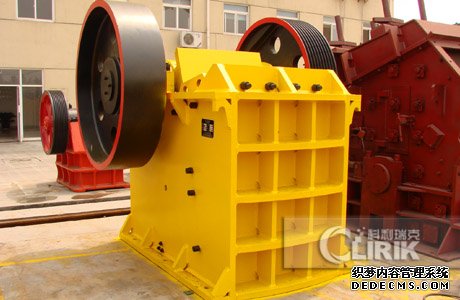Jaw crusher is crushing cavity is composed of two jaw plates, a movable jaw and a static jaw, which simulates the movement of the animal's jaws to complete the material crushing operation. It is widely used in the crushing of various ores and bulk materials in mining and smelting, building materials, highways, railways, water conservancy and chemical industries. The high compressive strength of the crushed material is 320Mpa. So what are the reasons for the increase in temperature of the
jaw crusher?
1. The temperature of the friction part. When the machine is running at high speed, the power consumed by friction is all converted into heat, causing the temperature of the friction parts to rise. When lubricating oil is used for lubrication, it continuously absorbs heat from the friction surface to dissipate it, or supplies a certain amount of oil to remove the heat and reduce the temperature of the friction surface.
2. Bearing temperature. When the
jaw crusher is working at high temperatures, you should always pay attention to the temperature of the bearing to keep it in a good lubrication state, and pay attention to whether the sound and vibration are abnormal. If it is found to be abnormal, stop and check immediately, find out the cause, and confirm whether it is stuck by a non-breakable object or the hammer head and other parts are damaged.
3. The temperature of the moving jaw. The jaw crusher uses the repeated movements of the jaw plate to squeeze and crush the material to achieve crushing. The upper and lower parts of the movable jaw are close to the fixed jaw. After the material is crushed, the movable jaw leaves the fixed jaw and the product is discharged from the discharge port. It can be seen that the operating intensity of the movable jaw is large, and the temperature of the movable jaw is prone to abnormality. When the temperature rises to a certain limit value, the jaw plate will be damaged. If necessary, certain measures must be taken to solve the abnormal temperature rise of the movable jaw to avoid the cause. Equipment failure causes downtime and reduces production efficiency.

